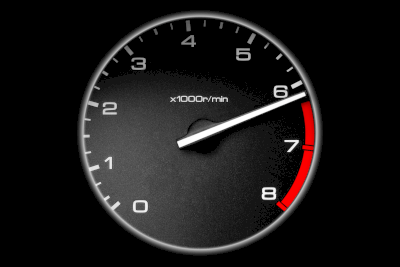What Is a Tachometer?

A tachometer is a device that measures the instantaneous speed of rotation. It includes a totalizer, which measures the total number of revolutions. It is used to measure the rotational speed of engines, motors, generators, etc.
In the past, analog tachometers were used to measure rotational speed by converting mechanical phenomena into frequency, but in recent years, optical tachometers have become the mainstream, as they are non-contact and can instantly measure rotational speed.
Uses of Tachometers
Tachometers are used to measure the rotational speed of various machines. An example is an engine. The rotational speed of an engine has a great deal to do with its power and torque. If the speed is too high, the engine loses stability and may be damaged. In addition, the rotational speed must always be measured in order to convert the speed into gearboxes of automobiles and other vehicles.
Furthermore, they are also used to verify the rotational speed of air conditioning and ventilation equipment. These rotational speeds are directly related to performance and are therefore useful in terms of performance evaluation.
Principle of Tachometers
Tachometers have long been used to measure rotational speed based on mechanical action, but in recent years, optical tachometers have become the norm.
Optical tachometers are non-contact and do not damage or wear out the tachometer or the object being measured. They also use lasers or LEDs as the light source. These are used in different ways depending on the application.
Here we introduce their applications and features:
- LED
LED light sources cause a slight scattering on the lens, which increases the measurable range depending on the distance to the object to be measured. However, the light intensity is lower than that of a laser, making it difficult to measure objects at a distance. - Laser
Laser light sources have high light intensity and luminance, making it possible to measure objects at great distances. However, this performance reduces the measurement range. In addition, the laser light must be applied stably and without blurring in order to make correct measurements.